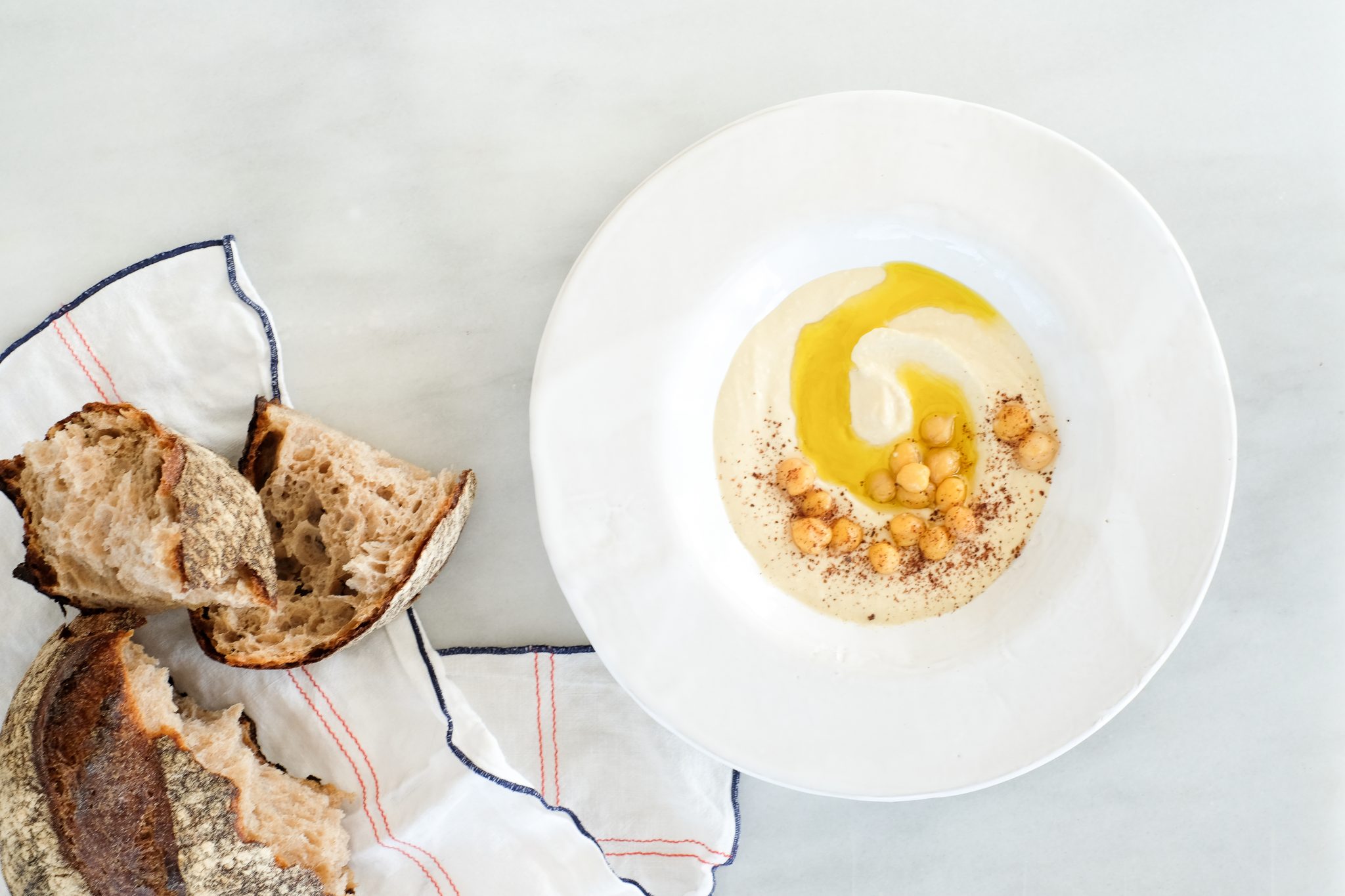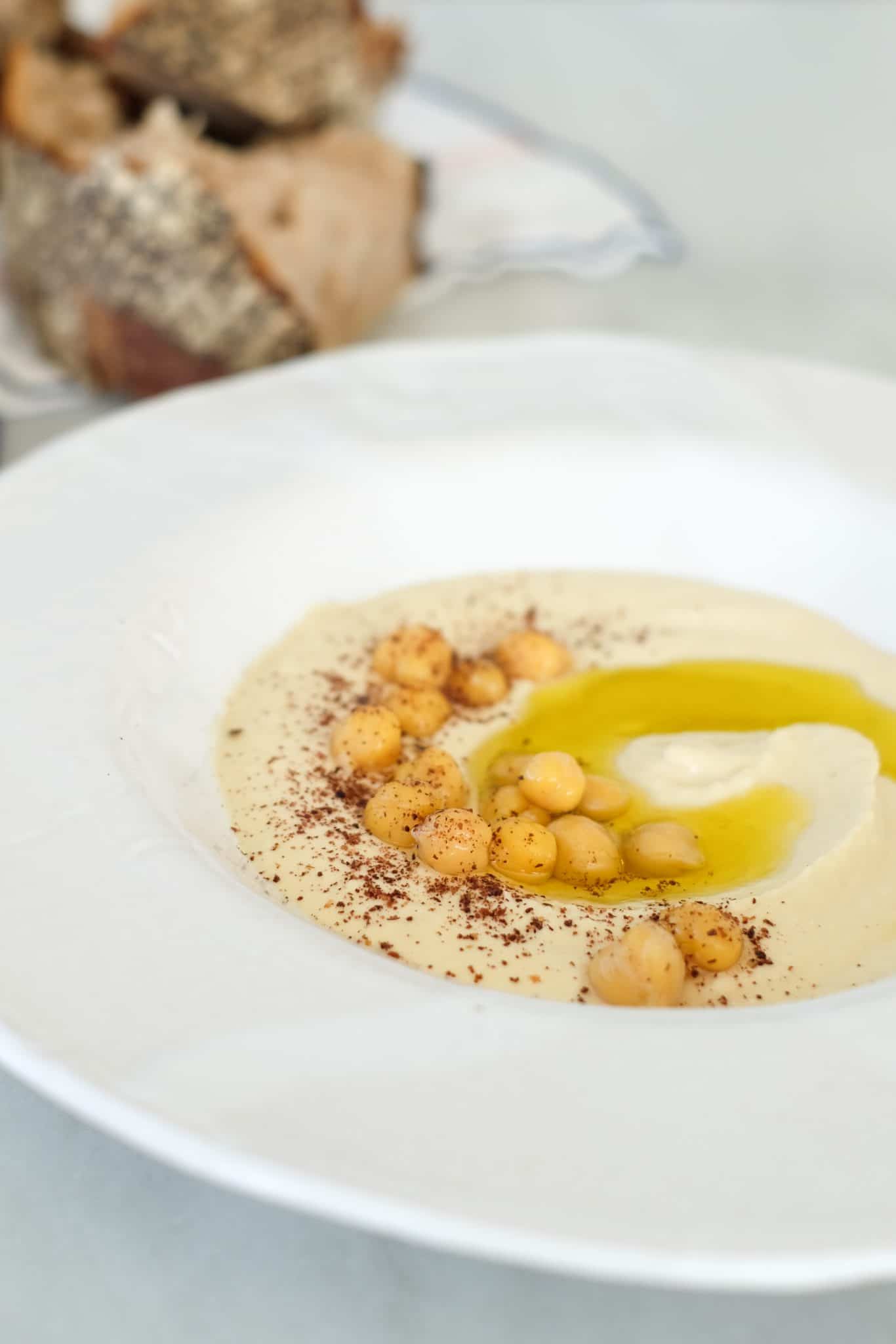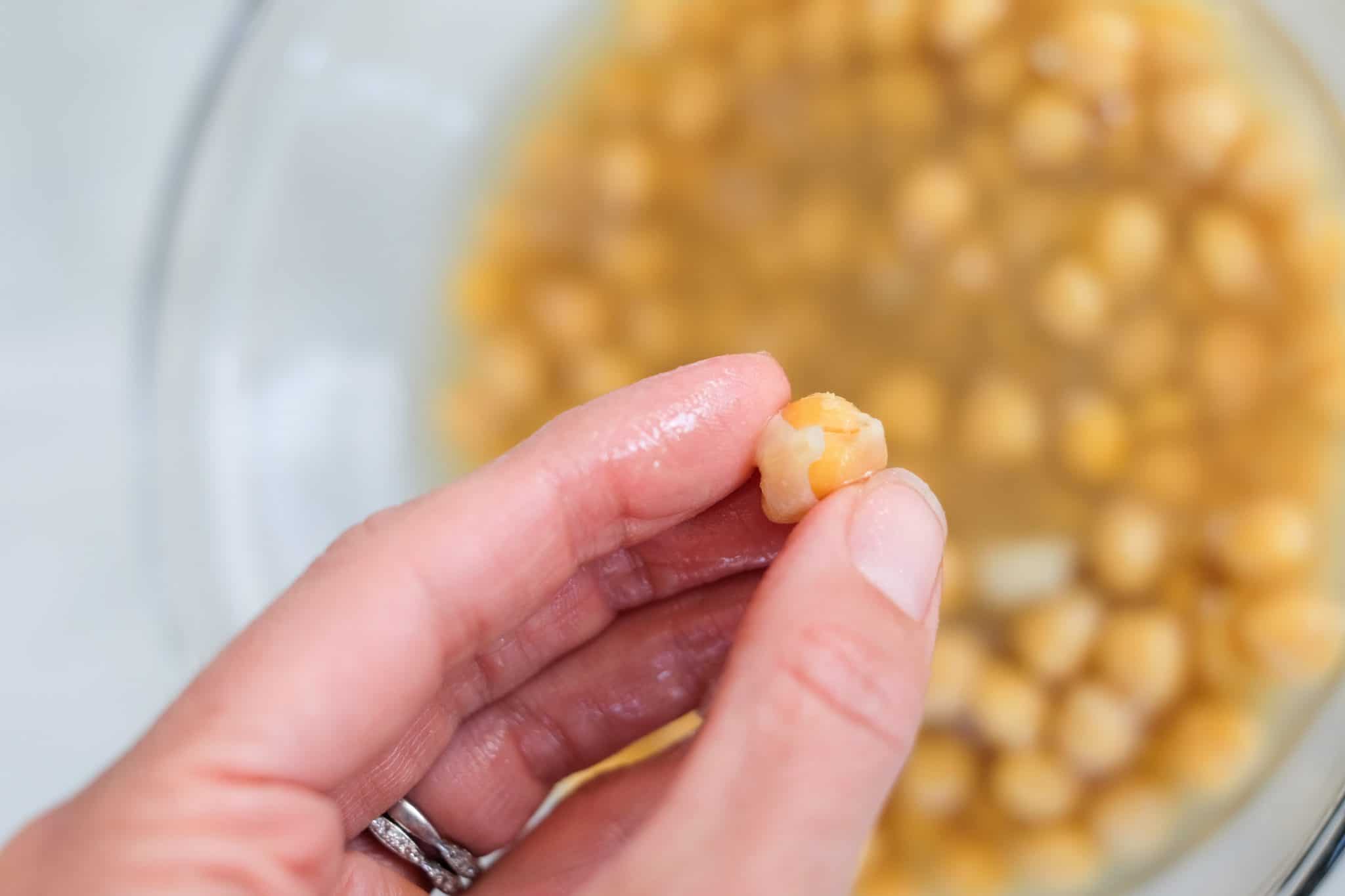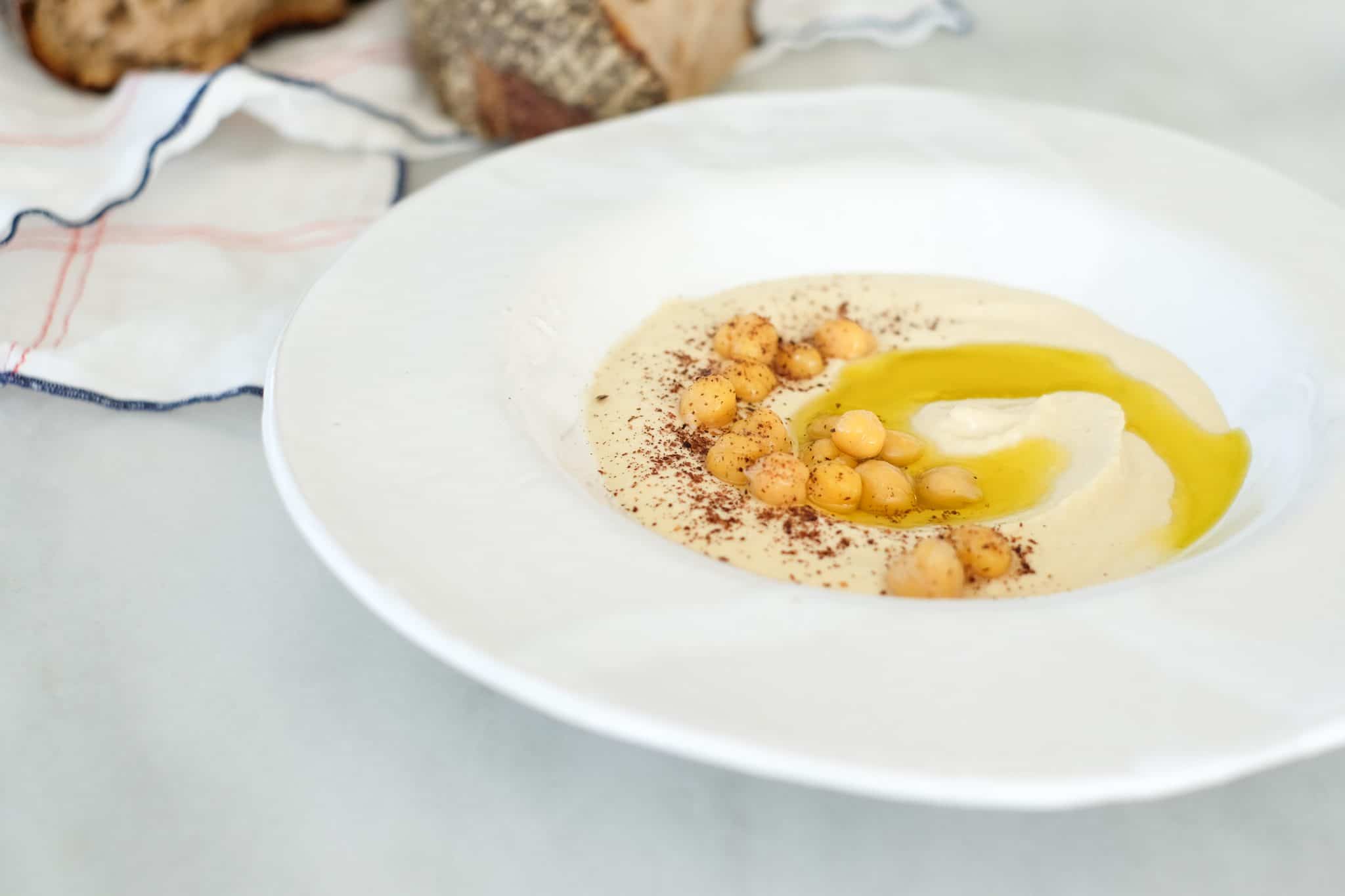
When you visit the Old City of Jerusalem, walk through the entrance to the Muslim quarter and follow the sloped path through the spice vendors and past the shops selling trinkets and kitchenware, until you get to the end. Turn left, and there, on your right, you will find the best hummus in the world.

It's a tiny place, just a hole in the wall, really, with a few plastic tables and chairs. All they serve is hummus. When you order, the shallow bowl of still-warm hummus comes ladled with cooked chickpeas and doused with a big swirl of rich olive oil. Along with the hummus you'll get a bowl of pickles and wedges of raw onions and piles of fluffy, tender pita. As you tear off a wedge of pita and drag it through the hummus, you'll leave a trail of olive oil behind. And it will be the best hummus you've ever tasted.
My hummus cannot compete with the experience of eating hummus in the Old City, but it's still very, very good. If you've made Ottelenghi's recipe, this is similar. There are a few tricks to getting very smooth, not-too-think hummus.
First, cook the chickpeas with a little baking soda in the cooking water. You probably know that adding salt to beans or legumes can make them tough, hold their shape. Adding a base (like baking soda), will make them soft, causing them to release their skins. Many of the skins will fall off and float to the top of the water, especially if you stir the water frequently. But it is also very easy to just pull the skins off after they are cooked. It's a meditative process and could be a good task for a child who wants to help.

Second, use good tahini. It makes a big difference. Most of the tahini sold in grocery stores in the United States is made from roasted sesame seeds, which ruins the flavor of the tahini. If you have a Mediterranean market in your area, look there for a good tahini made from unroasted sesame seeds, preferably one from Israel or Lebanon. Or, you can order this one. It's a whole grain tahini, and it's the best.
Third, adjust the ratio of tahini, lemon juice and salt until it's just right. Different brands of tahini taste different, and you might have stirred the oil in really well or not. Salts are different. Lemons have different levels of acidity. In the recipe, I gave ranges for each of these things, because every time I make it, it's a little different. I start with the smallest amount and then I taste and adjust. You can do the same, to make your perfect hummus.
You could serve this with a big salad or a platter of roasted vegetables and good bread, and it could be lunch or dinner. Or eat it out of the bowl with a spoon, which is what I do, most of the time.

[yumprint-recipe id='25']
I love when I see an email from a friend, and that’s how I think of you. I hope you feel the same. In my newsletter, I share the kinds of recipes and stories I used to blog about. You’ll get the recipes I’m cooking for my family as well as anything else I think might bring more connection or more joy.